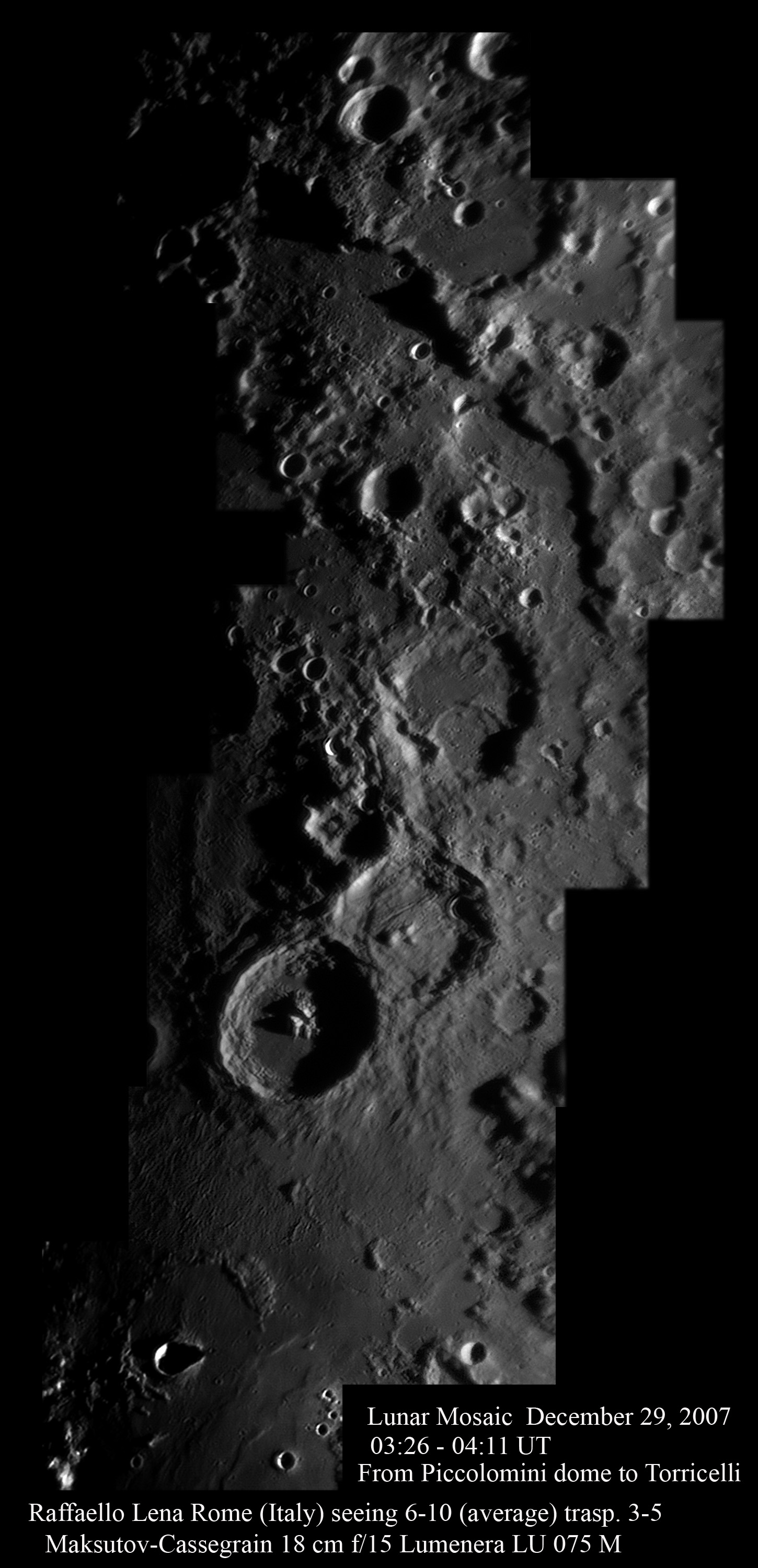January 28, 2008
The Long And Skinny

image by Raffaello Lena (GLR) click for full-size version
This large mosaic (with south at the top) shows a wide lunar region from Piccolomini (in shadow at the top) to Torricelli (the keyhole-shaped crater at the bottom). Theophilus, Cyrillus and Catharina are close to terminator, in a dramatic view in sunset. Theophilus is the youngest crater which shows defined central peak complex. Cyrilllus is older and has been partially filled with magma and the central peaks are still visible. Catharina is the oldest. Magma has filled it and the central peak is no longer visible. It is the largest of the three craters with a very irregular outline. These three craters provide a classic example of how craters change and their relative age: a crater sequence illustrating stages of degradation.
Piccolomini, a prominent lunar impact crater, is totally in the shadow. The low solar angle of the image shows a dome which lies about 85 km northwest of the 87 km crater Piccolomini and stands inside the Nectaris basin, about 30 km nearer its centre than the Altai Scarp. Its summit appears degraded but remembering that this is an ancient region (3.83-3.92 billion years of age), it would not be surprising that lower relief structures (mare ridges and domes) or plains regions (smaller lava flows) would have been eroded by later impacts. This dome was observed and drawn by Harold Hill on February 18, 1987. In his book A Portfolio of Lunar Drawings Hill writes: "A dome-like feature is indicated one diameter of Piccolomini to the West". An analysis of the dome will be carried out, using the GLR lunar dome classification, in order to determine if it is a highland dome or, more likely, a dome consisting of mare material later covered by highland material ejecta.
The Geological Lunar Research (GLR) group has an ongoing project to [/January+26%2C+2008 study lunar domes]. Our activity has shown the utility of CCD-image analysis in the elucidation of their character.We have added new domes to the existing lists and are ontinuing to do so, providing geological information, dome measurements and dome classification by slope and height.
Raffaello Lena
Editor's note: Chuck Wood is on vacation. Today's LPOD has been contributed by a member of the-Moon Wiki. You can [/How+to+Create+an+LPOD+Page do the same] while we await Chuck's return.
Technical Details
- Telescope: Maksutov-Casegrain 18 cm f/15
- Camera: Lumenera LU 075 M
- Observing location: Rome, Italy
- Time: December 29, 2007; 03:26-04:11 UT
Related Links
- Rükl plates 46 & 57
- GLR website
- A list of GLR publications
- Related LPOD's: A New Lunar Journal!
Yesterday's LPOD: Galileo's Moon?
Tomorrow's LPOD: A Field Test of Chuck's New Atlas
COMMENTS?
Register, Log in, and join in the comments.



